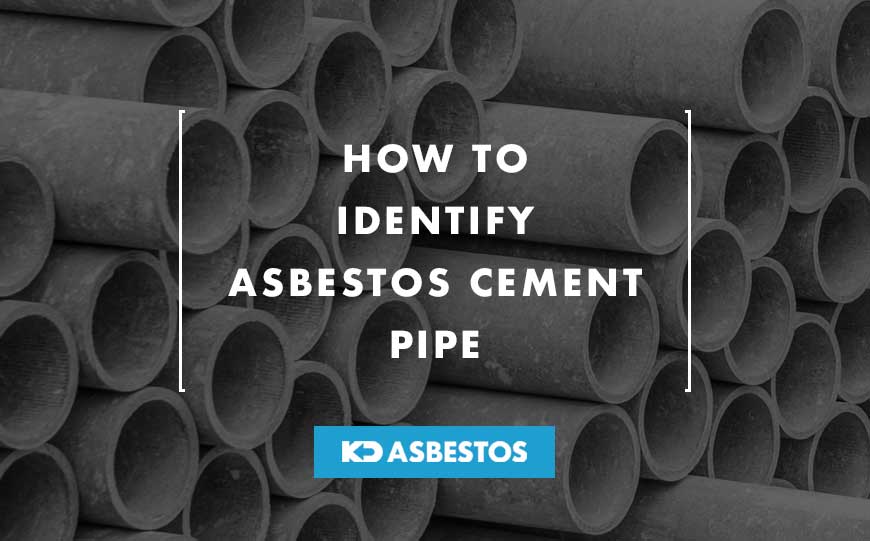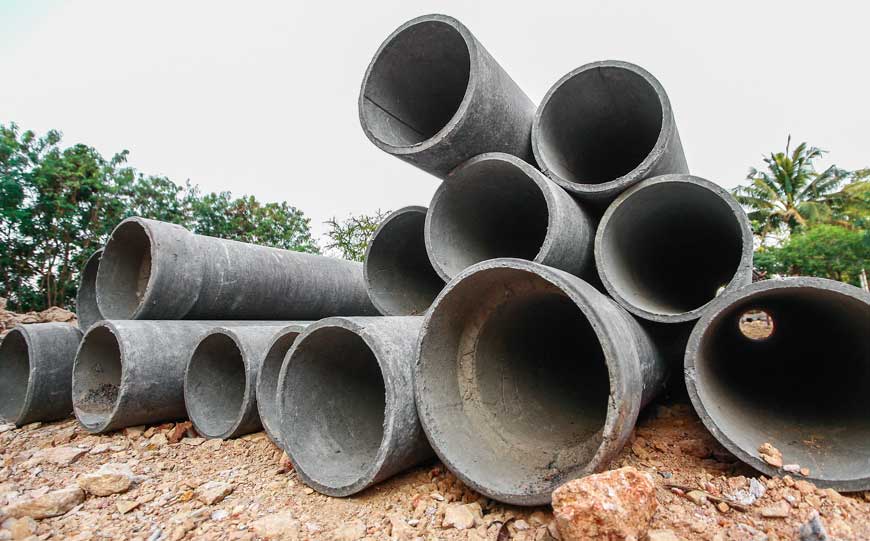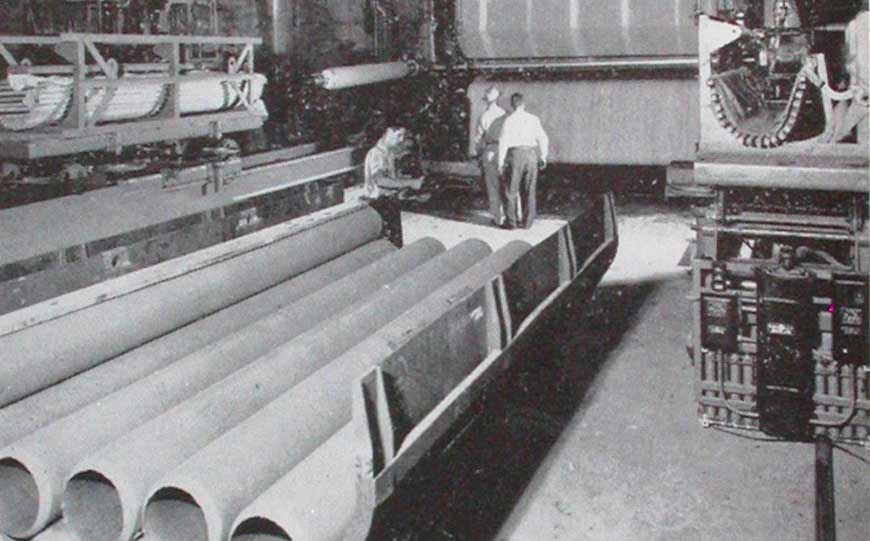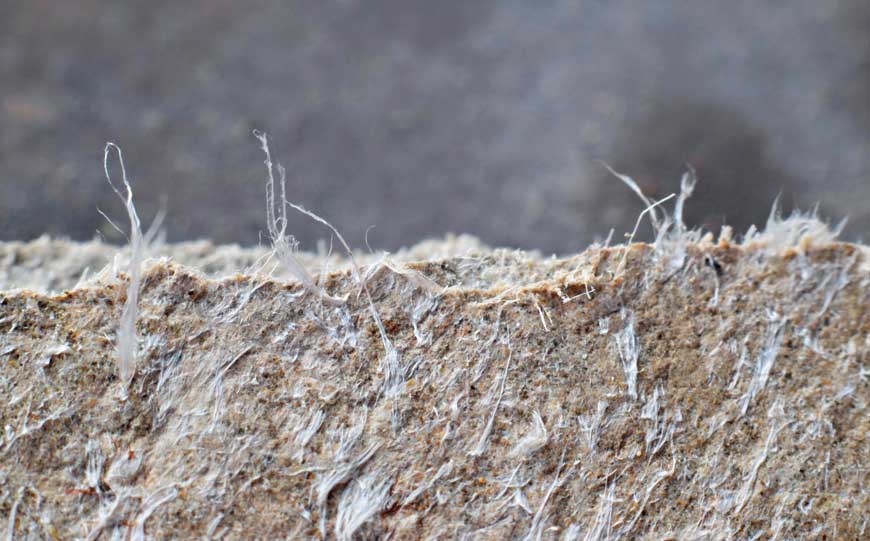
Asbestos cement pipes were commonly installed in properties for water, sewer and chemical piping.
But what do they look like and how do you identify them?
Unfortunately, such piping is still commonly present in a large number of homes and buildings.
Thus, handling and removal should be carried out with utmost caution, and ideally by a licensed asbestos professional.
In the following chapters, we outline how to identify asbestos cement pipes, and what you should do if you find them.
Table of Contents
What are Asbestos Cement Pipes?
Asbestos cement pipes, also known as transite, are essentially cement lines which have been mixed with asbestos.
They used to be very popular throughout the 20th century due to their strength and durability.
Many are still present even today as they’re estimated to have a life expectancy of around 70 years.
Why Were Asbestos Pipes Used?

Image credit: Shutterstock
Asbestos cement pipes were known to be highly resistant to extreme temperatures, moisture, wear and tear, corrosion, and even to any biological or chemical reactions.
So it’s no wonder many utility companies used to favour it so much.
Moreover, asbestos cement pipes were also affordable and easy to handle.
In fact, their low friction coefficient and lightweight design made them ideal for liquid transportation.
Asbestos pipes were installed in various settings and uses, including:
- sewer pipes
- air ducts of heating and cooling systems
- electrical conduits such as electrical wiring and cable services
- gas vent pipes of gas appliances
- ventilation pipes used for fumes, gasses and dust
- waste pipes of industrial waste lines
- plumbing vent pipes such as those in waste lines
- pressure pipes found in water supply and distribution mains
- irrigation pipes found in sprinklers and waste recovery systems
- telephone ducts
History of Asbestos in Pipe Manufacture

Image credit: Inspectapedia
Back in the early 1900’s, asbestos cement pipes began to be developed in order to obtain a durable material for piping systems.
In fact, it became common practice to reinforce cement by adding asbestos to the compound.
The industry of pipe manufacturing used asbestos in order to produce the actual pipes as well as for pipe wrapping.
Asbestos was easy to mix in, and it could be found in many mines.
Back then, manufacturers were producing two types of pipes which contained asbestos, namely:
Steel Pipes
These were mixed with asbestos containing materials, and asbestos cement pipes, which were commonly referred to as Transite.
In the case of the former, the overall composition of the pipes was of around 15% of asbestos fibres.
However there were cases where asbestos insulation was also present, and hence such pipes would have been 100% asbestos.
Cement Pipes
Later in the 1940s, asbestos cement pipes started to be used in wastewater collection systems, as well as for irrigation and drinking water distribution.
Back then, such pipes were responsible for around 20% of such distribution.
Moreover, city lines which were constructed between the 1930’s and 1970’s generally featured asbestos cement pipes.
The main problem here is that even though such pipes were thought to be corrosion proof and highly durable, since over 50 years had now passed, many started to degrade, leading to the release of asbestos fibres in the water supply.
By the 1980’s, asbestos cement pipes had become the norm.
But it was around this exact time that many utility companies started to cease using them as the dangers associated with asbestos exposure had started to come to light.
Known Manufacturers Using Asbestos Pipes
There were various manufacturers who were well known in using asbestos pipes over the years.
Johns Manville is one of the top companies which openly used asbestos for several years.
Others included:
- Ametek Inc
- Capco
- Armstrong World Industries
- Philip Carey Asbestos Products
- Forty-Eight Insulations
- Gaf-Ruberoid
- Unarco Industries
- Plibrico Company
- Flintkote
- CertainTeed
- Kubota Corporation
- J-M Manufacturing Company
- Keasbey & Mattison Company
Asbestos Pipe Health Risks

Image credit: Shutterstock
As with any other asbestos containing material, asbestos pipes are also hazardous.
If asbestos fibres are inhaled, they will remain in the human body, leading to various numerous diseases.
Unfortunately, asbestos pipes used to be very popular back in the 1900’s until asbestos was banned in the UK towards the end of that century.
Consequently, many workers used to handle such pipes, and they were thus exposed to asbestos on a regular basis.
As a result, such workers may easily suffer from asbestos pipe health risks after several years.
Since asbestos pipes started to be used a great deal around the 1930’s, and it’s estimated that they have a lifespan of around 70 years, over the past couple of decades there have been growing concerns about the deterioration of such pipes.
The most common diseases related to asbestos exposure are mesothelioma, peritoneal mesothelioma, cancer and lung diseases.
Having said that, the main concerns associated with such health risks are linked to workers who used to work with such pipes on a daily basis.
The average homeowner does not really have to worry about developing such diseases by simply using asbestos permeated pipes.
However, health risks associated with ingesting are very real, especially if the pipes have started to deteriorate.
In such a case, the fibres will start to get into the water supply.
How to Identify Asbestos Pipe

Image source: Shutterstock
Here are some tips which could help you identify asbestos piping:
- Asbestos piping is located underground. In many cases it is buried or encased.
- Such pipes are generally whitish-grey in colour.
- The insulation of the pipes is a key indicator. If there is a lack of insulation, then most probably they are old pipes that no longer have any insulation wrapping, but just remnants here and there, such as around the fittings.
- Mold tends to thrive on old asbestos, so you could check if there is any present around the pipes, on drain traps and gutters.
- The age of the pipes needs to be taken into account. If the property was built over 50 years ago, most likely asbestos piping is present.
- If the pipes were installed over 50 years ago, most likely they have started to show some signs of deterioration.
Asbestos piping is very dangerous if it is no longer in good condition.
So if you notice any pipes which look frail, broken, or have started to become friable, it’s crucial to seek assistance by a professional asbestos removal company.
Conclusion
If you suspect there’s any asbestos pipes present in your property, it’s crucial to hire a certified professional to visit your premises for an inspection.
In most cases, they will take a sample for asbestos testing and determine whether removal of any hazardous material is necessary.